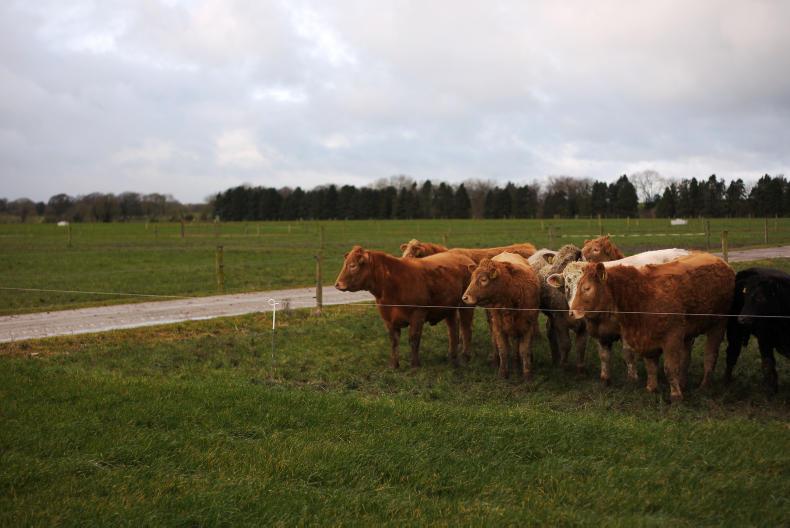Which cattle?
Ideal candidates for going to grass first are light yearlings or replacement heifers. They’ll do minimal damage to the ground. Cattle like this would be perfect to graze silage ground tight in the coming weeks. They’ll invigorate the sward and remove any yellow, fibrous material that would negatively affect our silage quality.
Which fields?
Obviously drier ground should be targeted first, but the sward height in a field is important for consideration too. Younger stock will find it hard to graze out very heavy covers (>8cm) and if pushed to do so can become unsettled and damage the ground. If you’re going with light yearlings, target them towards 6-8cm covers. Leave the heavy grass for your more experienced grazers, like heavy stores or cows with calves. In all cases, it’s crucial to hit 4cm residuals as often as possible in the first rotation.
What’s the forecast?
Heavy showers will upset cattle – they’ll be seen doing laps and congregating in corners. This might not be the end of the world on dry ground, but for those on heavy soils trying to get grass into the diet it can be difficult in periods of mixed weather. Be smart when letting out cattle – if there’s significant moisture forecast soon, hold off. If it comes after a few days of grazing, don’t be afraid to run them onto a roadway or into a pen/yard for a few hours until the rain passes.
Hunger
In all cases, cattle should go out hungry. This way they’ll leap around for a few minutes and then drop their heads and get grazing. If they go out full they’ll playact for hours and potentially cause more ground damage.
Let them settle
As well as being hungry, cattle should ideally have a chance to settle in the period between coming out of the shed and going to grass. Stand them in an open yard area for a couple of hours before grazing, if possible.
Little and often
The burning question: “Do I let cattle run big areas or keep them confined?”
If we’re serious about grazing then it should be the latter. The ideal scenario at the moment is to have groups moving every day, leaving a relatively tightly-grazed plot behind them. The reel is your best friend for this. Keeping them moving will keep them happy and minimise walking damage. Believe it or not, this is best practice on heavy ground and many of our BETTER farmers have found success with this method.
Read more
Numbers jump but calf trade stays lively
Beef trends: price on continuous flatline
Which cattle?
Ideal candidates for going to grass first are light yearlings or replacement heifers. They’ll do minimal damage to the ground. Cattle like this would be perfect to graze silage ground tight in the coming weeks. They’ll invigorate the sward and remove any yellow, fibrous material that would negatively affect our silage quality.
Which fields?
Obviously drier ground should be targeted first, but the sward height in a field is important for consideration too. Younger stock will find it hard to graze out very heavy covers (>8cm) and if pushed to do so can become unsettled and damage the ground. If you’re going with light yearlings, target them towards 6-8cm covers. Leave the heavy grass for your more experienced grazers, like heavy stores or cows with calves. In all cases, it’s crucial to hit 4cm residuals as often as possible in the first rotation.
What’s the forecast?
Heavy showers will upset cattle – they’ll be seen doing laps and congregating in corners. This might not be the end of the world on dry ground, but for those on heavy soils trying to get grass into the diet it can be difficult in periods of mixed weather. Be smart when letting out cattle – if there’s significant moisture forecast soon, hold off. If it comes after a few days of grazing, don’t be afraid to run them onto a roadway or into a pen/yard for a few hours until the rain passes.
Hunger
In all cases, cattle should go out hungry. This way they’ll leap around for a few minutes and then drop their heads and get grazing. If they go out full they’ll playact for hours and potentially cause more ground damage.
Let them settle
As well as being hungry, cattle should ideally have a chance to settle in the period between coming out of the shed and going to grass. Stand them in an open yard area for a couple of hours before grazing, if possible.
Little and often
The burning question: “Do I let cattle run big areas or keep them confined?”
If we’re serious about grazing then it should be the latter. The ideal scenario at the moment is to have groups moving every day, leaving a relatively tightly-grazed plot behind them. The reel is your best friend for this. Keeping them moving will keep them happy and minimise walking damage. Believe it or not, this is best practice on heavy ground and many of our BETTER farmers have found success with this method.
Read more
Numbers jump but calf trade stays lively
Beef trends: price on continuous flatline






 This is a subscriber-only article
This is a subscriber-only article










SHARING OPTIONS: